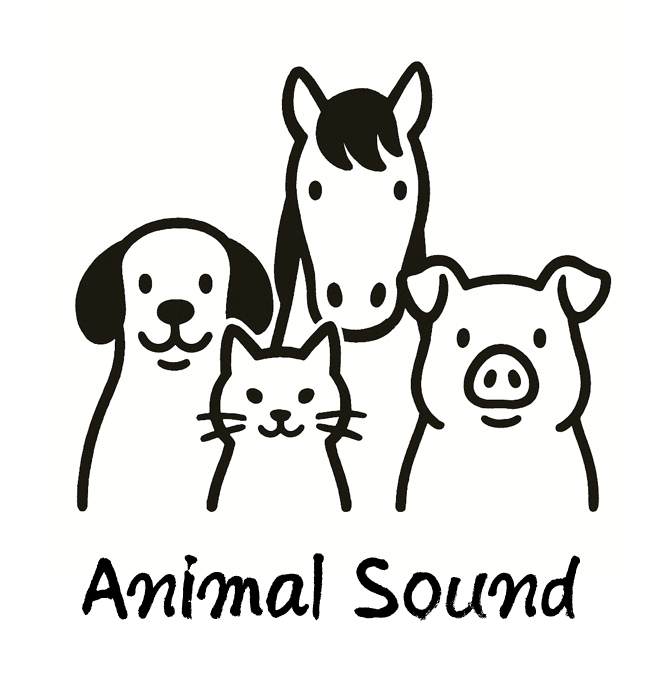When you think of a farm, one of the first sounds that may come to mind is the familiar “moo” of a cow. But did you know that calves — baby cows — have their own unique set of vocalizations? These soft, high-pitched sounds serve an important purpose in the early stages of a calf’s life. Whether you’re a farmer, animal lover, or just curious about animal communication, understanding what a calf sounds like and what those sounds mean can offer valuable insights into their well-being and needs.
The Sound of a Calf: A Gentle “Moo”
Calves communicate through vocalizations that are generally softer, higher-pitched, and less forceful than those of adult cows. A calf typically lets out a gentle, high-pitched “moo” when it wants attention. This sound is most commonly heard when the calf is:
- Hungry
- Calling for its mother
- Feeling anxious or lonely
- Cold or uncomfortable
- In need of care or reassurance
These sounds might be infrequent or more persistent depending on the calf’s condition. For example, a hungry calf that has been separated from its mother might repeatedly vocalize in an attempt to reconnect.
Why Calves Moo: The Purpose Behind the Sound
Calf vocalizations are not just random noises — they are crucial tools for survival and bonding. In nature, calves rely on sound to stay connected to their mothers, especially in the first few weeks of life. Here’s a deeper look into why calves make noise:
1. Bonding With the Mother
Immediately after birth, a calf forms a strong bond with its mother. Vocal cues help reinforce that connection. A soft “moo” from the calf can prompt the mother cow to respond with her own vocalization, guiding the calf to her location.
2. Seeking Nourishment
Hunger is one of the most common reasons a calf will vocalize. If it has not nursed recently, the calf will moo to attract its mother’s attention and signal that it needs to feed.
3. Expressing Discomfort
Cold, pain, or general discomfort can also cause a calf to vocalize. This could be due to wet bedding, an injury, illness, or being separated from the herd. A good farmer listens for these cues to address potential problems quickly.
4. Exploring and Learning
As calves grow and start to explore their surroundings, they may vocalize during interactions with other calves, humans, or animals. These sounds can indicate curiosity or attempts at social communication.
How Farmers Use Calf Vocalizations
Experienced farmers often recognize that vocalizations are among the first signs something might be wrong. A calf that is usually quiet but suddenly begins mooing constantly might be hungry or ill. Conversely, a calf that has gone unusually quiet may be experiencing stress or discomfort.
By paying close attention to these sounds, farmers can take quick action to ensure the calf’s health. This might involve:
- Checking if the calf is nursing properly
- Ensuring the calf has a warm, dry place to sleep
- Inspecting for signs of illness or injury
- Reuniting a separated calf with its mother
In modern farming, some operations even use sound recognition technology to monitor calf vocalizations. These systems can alert farmers to unusual patterns, allowing for proactive animal care.
Differences Between Calf and Cow Sounds
Though similar in general tone, there are some clear differences between calf and cow vocalizations:
- Pitch: Calf sounds are higher-pitched and more delicate.
- Volume: Calves are typically quieter than adult cows.
- Frequency: Calves vocalize more frequently when separated from their mothers or when in need.
- Purpose: Cow vocalizations can be for mating, warning, herding, or expressing dominance, whereas calf sounds are more focused on survival and comfort.
Understanding these differences helps farmers and caretakers know whether they are hearing a calf in distress or just a cow calling her herd.
Tips for Responding to Calf Vocalizations
If you’re raising calves or visiting a farm and hear a calf vocalizing, consider these practical tips:
- Observe Behavior: Is the calf pacing, shaking, or standing alone? These signs combined with vocalizations may suggest discomfort.
- Check for Hunger: Ensure the calf has fed recently, especially if it’s under 8 weeks old.
- Inspect the Environment: Drafts, wet bedding, or cold temperatures can cause distress and prompt vocalizations.
- Watch for Injury or Illness: Persistent or painful-sounding moos may be a sign that the calf is unwell.
- Reassure the Calf: Young animals are sensitive and benefit from calm, gentle handling. Your presence alone may help reduce their anxiety.
Using Free Calf Sound Effects (무료 효과음)
If you’re creating educational content, animal documentaries, or farm-themed media, you might be looking for 무료 효과음 to enhance realism. Many websites offer royalty-free animal sounds you can download and use in your projects. These can help illustrate the natural behaviors and needs of calves, especially when teaching young children or training farmhands.
Make sure the sound effects you choose are:
- Authentic (recorded from real animals)
- Clear (free of background noise)
- Labeled properly (e.g., calf moo vs cow bellow)
Some great uses of calf sound effects include:
- Farm-themed apps and games
- Kids’ educational videos
- Training modules for new farmers
- Informational presentations on animal welfare
Conclusion
Calves are vocal little creatures, and their sounds carry meaning far beyond a simple “moo.” These high-pitched, gentle calls help calves bond with their mothers, express needs, and alert caregivers to potential problems. Whether you’re tending calves on a farm or just fascinated by animal behavior, understanding these vocalizations opens a window into the emotional world of livestock.
So next time you hear a soft moo from a barn, pause and listen — that little voice might be saying a lot more than you think. And if you’re working on an audio or visual project, don’t forget to look for 무료 효과음 (free sound effects) to bring those baby bovines to life!









